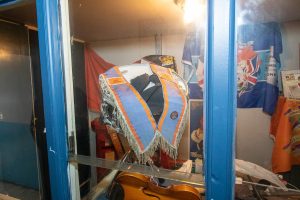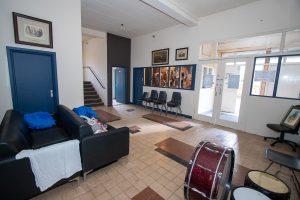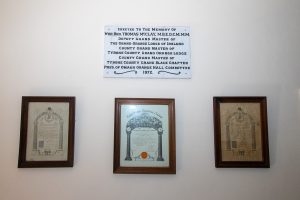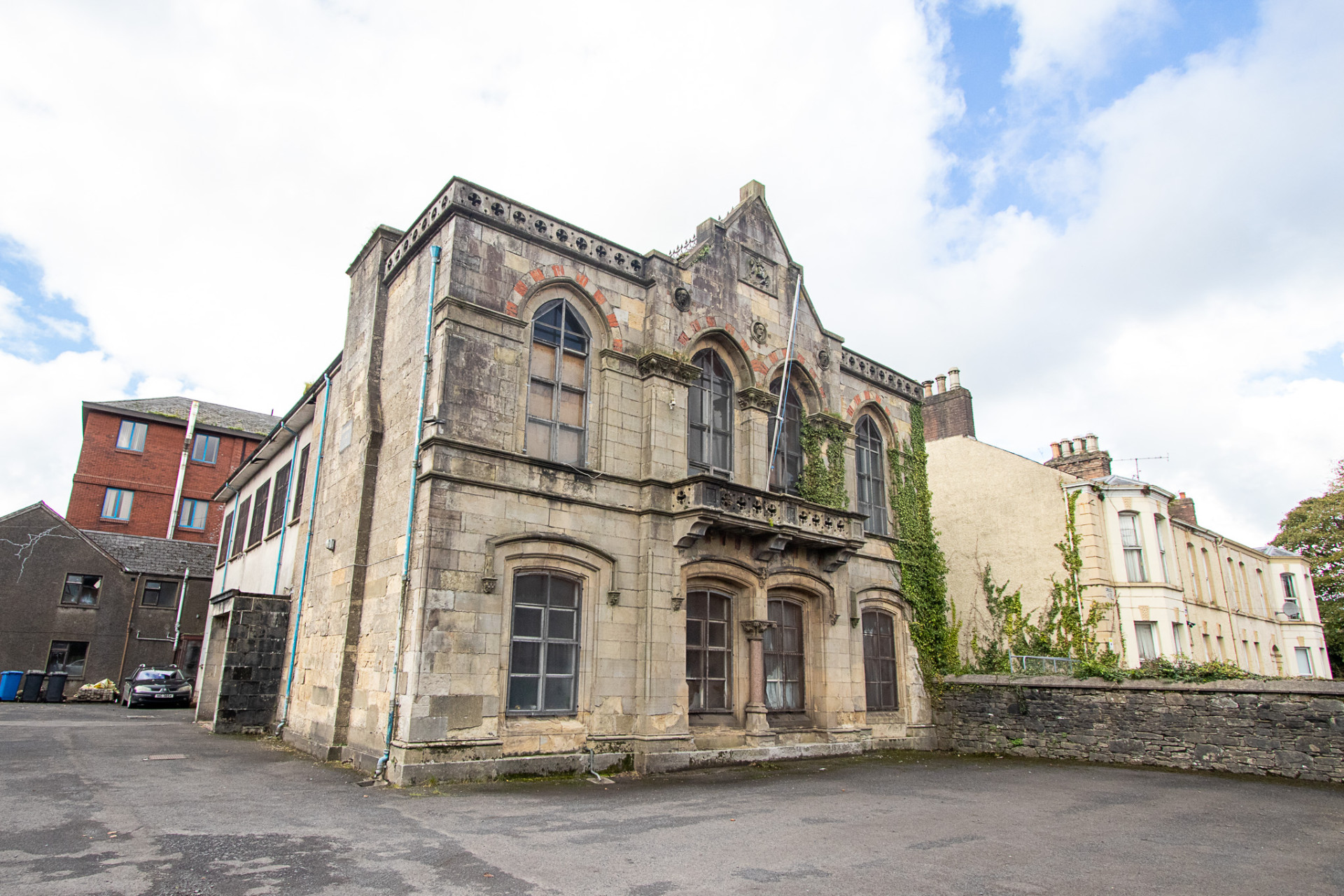Appearances can certainly be deceptive. From the outside, the 150-year-old Orange Hall opposite the Omagh Bus Station looks like another empty old buildng, seemingly in decay.
However, not only does this premises have a long and proud history of cross-community actvity, plans are afoot to revitalise the building as a welcoming, multi-cultural hub, and, essentially, restore the hall to its former glory.
The story of the hall begins back in the mid-1800s, when Orange lodges in the Omagh district met in rural barns and plots of land outside the town centre.
A desire for a central, shared premises resulted in a decision to build the ‘Protestant Hall’ on the intersection between Sedan Avenue and Gortin Road.
The Orange lodges sought the skills of architect, Fitzgibbon Louch, from Derry, who is most famous for designing Lough Eske Castle in Donegal in 1863, to take on the task of designing a permanent place for the Orange bands to practice and congregate.
The original design featured a coffee room, cloak room, a pantry, a ‘minor’ hall and one great hall, with the building itself consisting of sandstone sourced from a quarry in Drumquin.
Outside features include the grand balcony, which can be seen from the front, with a plaque depicting prince William of Orange on his horse, accompanied by stone heads of Earl of Enniskillen, Captain Mervyn Stewart, William Johnston Esq. and MP Samuel McClean, the contractor for the hall.
In the early 1860s, a ceremony was held for the ‘cutting of the sod’, a celebration to mark the start of a construction project. A many as 5,000 locals attended this event, which went off with a bang… literally!

The ‘Roaring Megs’ were a set of cannons used in defence of Derry during the siege of 1681.
One of these battle-hardened cannons was transported to Omagh via horse and cart, its only journey outside of Derry, and fired to offically start construction in style.
The original hall was finished by 1869, and the numerous lodges around the Omagh area immediately took up residence.
Geoff Mosgrove, head of the Cultural Hub within the hall, is well versed in the history of the building.
He says that people actually resided in the hall, and would often be kept awake at night as Orange meetings went on into the early hours.
Over the years, many families would inhabit the halls rent-free, in exchange for working as the caretakers, cleaning and maintaining the property.
“The residents had bedrooms upstairs in the hall with their own beds and dressers, but when a meeting was being held they’d have to take all of the furniture out until the meeting was over,” Geoff explained.
“However, at these meetings, the men would have bottles of stout tucked into their clothes… And, sometimes, they would go on until four or five in the morning.
“During all of this, the family are downstairs waiting for at all to be over so they can clean up, put their furniture back… and get some sleep!”
Once interesting fact about the hall is that it housed British troops before they went off to the frontlines in World War Two, due to the fact that the nearby army camp was overfilled with soldiers.
Another surprising aspect of the building’s heritage is that it once was a thriving cross-community facility.
“The hall was used by Catholics and Protestants alike, integrating together as one community,” said Geoff.
“It really was an entertainment hub in the town, and most nights in the week, there was something going on for people to enjoy, particularly dances on Friday and Saturday nights which would attract huge crowds.
“Some people would start off here, and then make their way to the British Legion, while others would head to the Irish National Foresters (INF).
“People were much more tolerable back then, and accepted their differences.”
This strong spirit of togetherness was shattered by The Troubles.
In fact, according to Geoff, many members feared for the safety of the hall’s Orange memorabilia, and removed historical artifacts belonging to local lodges to protect them.

In recent times, however, many of these artifacts have returned to the hall’s possession, and plans for a museum are underway, with a large collection of banners, neck-collars and trinkets from both world wars are being stored safely for future showcasing.
Geoff also says efforts are ongoing to ‘turn back the clock’ and revitalise the hall for modern use as a community hub.
The local Men’s Shed group is already utilising the facilities, and their members are also aiding Geoff in the restoration of the building’s interior.
Furthermore, the bulding currently hosts a range of fitness and music classes, with future plans to use its grand hall as a theatre and joint-use centre.
As the hall develops, Geoff says that he is ‘delighted’ to see the progress made to date.
“It is just amazing how much work that the members of the hall and volunteers from Men’s Shed have made to the building so far,” he said.
“I have a grand vision for what to do to the hall in time, but we’re only at the start of a five-to-ten year plan, with lots still to be done!”
He concluded, “The ultimate goal is to turn back the clock to a time when members of all backgrounds could enjoy the hall together as the community of Omagh.”









